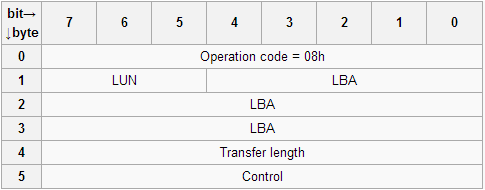A Survey of Construct 3 January 07, 2013

I’m working on Construct 3 again and I’m exploring lots of new ideas. I wanted to share these ideas at this early stage to get feedback on them from users, to keep the project on track. This survey starts a bit slow (as I’m not counting on users being familiar with Construct) but it dives into code right away.
You can leave your feedback in the Disqus comments below, or join the new discussion group dedicated to Construct (both 2 and 3). See Also: Construct 2, Pickler Combinators
Introduction
Construct is a binary packing combinators library for Python in which you can define rich data structures. Unlike most alternatives, these data structures can be used for both packing and unpacking of binary data; for instance, once you define what a TCP packet is, you can analyze packets or construct ones on your own, with no additional code.
TL;DR box
We begin the discussion with the atomic constructs: bytes, integers, floats, etc. With these,
we build composite packers (Sequence, Array, and Struct), which can also be created using some
syntactic sugars, and discuss the changes from Construct 2.
Next, we cover how Construct handles data (the stream of units approach) and how this helps us when working
with multiple levels of data granularity (bits and bytes). We also introduce
adapters, which transform object representations for packing and unpacking,
and macros, which enable us to easily reuse existing constructs.
Then we cover the context and the this object, which allow us to express dependencies
within data structures. From there we move to code generation, a key feature of Construct 3:
to improve performance, constructs would be compiled to imperative Python code (even Cython, one day). We finish
with a semi-formal proof that Construct is more powerful than context-free languages, making it probably the most
powerful parser in existence!
Basics
Packers are objects that expose the two methods pack(obj) and unpack(data). Intuitively, pack takes an
object suitable with that packer and returns a binary representation of it; unpack is the inverse operation,
taking a binary representation and returning a Python object. Here’s the most fundamental example:
>>> from construct3 import byte
>>> byte.pack(127)
'\x7f'
>>> byte.unpack('\x7f')
127There’s more than mere byte, of course: the numeric family consists of int(8|16|24|32|64)(s|u)(b|l)
(e.g., int32ul) and float(32|64)(b|l), where s = signed, u = unsigned, b = big endian and
l = little endian, but we will overlook those for now. By the way, byte is an alias for int8u.
These can be seen as atoms and Construct is a library of combinators: it gains it’s power from combining
simpler elements into more complex structures. The simplest combinator is Sequence, which we’ll explore by
defining an IPv4 address as a sequence of 4 bytes:
>>> from construct3 import Sequence
>>> ipaddr = Sequence(byte, byte, byte, byte)
>>> ipaddr
Sequence(int8u, int8u, int8u, int8u)
>>> ipaddr.unpack('\x7f\x00\x00\x01')
[127, 0, 0, 1]
>>> ipaddr.pack([192, 168, 2, 1])
'\xc0\xa8\x02\x01'Naturally, we can created nested sequences (not that it makes sense right now, but it’s important to note):
>>> Sequence(Sequence(byte, byte), byte, byte).unpack("ABCD")
[[65, 66], 67, 68]Since combining packers is our bread-and-butter, let’s introduce a syntactic sugar – the bind operator (>>).
This operator takes two packers and returns a sequence thereof. Here’s how it looks:
>>> ipaddr = byte >> byte >> byte >> byte
>>> ipaddr
Sequence(int8u, int8u, int8u, int8u)Sequences can be heterogeneous (consisting of several kinds of packers, e.g., Sequence(float64b, int16ul));
however, when the data we’re dealing with is homogeneous, we can use Arrays instead. Following along the lines
of the previous example, we can define ipaddr as an array of 4 bytes:
>>> from construct3 import Array
>>> ipaddr = Array(4, byte)
>>> ipaddr
Range(4, 4, int8u) # Range? We'll get to that later
>>> ipaddr.unpack("\x7f\x00\x00\x01")
[127, 0, 0, 1]But as arrays themselves are pretty common, you can create arrays using the subscript notation ([]), as follows:
>>> ipaddr = byte[4]
>>> ipaddr
Range(4, 4, int8u)Isn’t it cool?
More Elaborate Structures
So far we’ve only worked with data in the form of lists. However, many times (and especially when nesting is involved),
we would like to give names to the subcomponents that make up our data structure. Enter Struct. Named after the
C struct statement, Struct takes pairs of (name, packer) and returns a composite packer.
>>> from construct3 import Struct
>>> ipaddr = Struct(('a', byte), ('b', byte), ('c', byte), ('d', byte))
>>> x = ipaddr.unpack('\xc0\xa8\x02\x01')
>>> x
Container:
a = 192
b = 168
c = 2
d = 1
>>> x.a
192
>>> x["a"]
192Note
In Construct 2, all constructs took a name parameter. While this approach works great for Structs, it doesn’t make much sense for Sequences, Arrays, and virtually all other constructs. Moreover, it was the cause for the the notorious Rename construct.
One of the most important cleanups of Construct 3 is dropping the name from packers and moving it to where it belongs -
Struct.
Notice that unpacking a Struct breaks down the data into a Container object, which is simply a
convenience-wrapper around good-old dict. Likewise, given a dict-like object, you can pack it back into bytes:
>>> ipaddr.pack({"a" : 192, "b" : 168, "c" : 2, "d" : 1})
'\xc0\xa8\x02\x01'Structures can soon grow large and have many nested structures within them. Using pairs of ("name", packer) quickly
becomes a burden and your code starts looking like LISP:
Struct(
("foo", byte),
("bar", Struct(
("spam", int16ul),
("bacon", int64sb),
)),
("viking", int32sl),
)
In order to avoid carrying your father’s parentheses with you, Construct provides yet another syntactic sugar:
the slash (/) operator. This operator is used as "name" / packer and simply returns ("name", packer).
Let’s revise the previous code snippet:
Struct(
"foo" / byte,
"bar" / Struct(
"spam" / int16ul,
"bacon" / int64sb,
),
"viking" / int32sl,
)I wish it were possible to override = or :, but sadly this isn’t the case. However, I feel / is “good
enough” a choice, plus it binds more tightly than most operators.
Remember the bind operator (>>)? It can be used just the same here, making one-line Structs quick and easy:
>>> ipaddr = 'a' / byte >> 'b' / byte >> 'c' / byte >> 'd' / byte
>>> ipaddr
Struct(('a', int8u), ('b', int8u), ('c', int8u), ('d', int8u))Note
The “inline style” is appropriate for small Structs and Sequences (2-4 members). When dealing with larger structures, use the “multiline” version instead. It’s more readable and scalable.
Also note that these are all but syntactic sugars: If you don’t like their looks, you can always use the expanded form.
Bytes and Bits and Units
Bytes are easy to work with, but protocols and file formats often talk at different levels of granularity,
switching between bits and bytes. For instance, here’s the SCSI CDB of READ6:
The LUN component is 3 bits long and the LBA component is 21 bits long… how can we handle this? Before we get
to that, it’s important to understand a little of how things work under the hood - specifically, the stream of
units approach. Internally, Construct operates on a stream of arbitrary units, which normally happen to
be bytes. When needed, this stream can be replaced (or wrapped) to provide different units, e.g., bits.
Here’s an example:
read6 = Struct(
"opcode" / byte,
"address" / Bitwise(Struct(
"lun" / Bits(3),
"lba" / Bits(21),
)),
"transfer_length" / byte,
"control" / byte,
)Note how we switch between bytes and bits: opcode is a byte, followed by address which operates on bits. The
Bitwise packer replaces the underlying byte-stream with a bit-stream, so the contained Struct now operates on bits.
The Struct itself nows nothing of it, and it’s only required that the underlying packers would be able to make
sense of it. For instance, you can place an int32ul inside a Bitwise packer, but the result would meaningless:
it will read four bits and treat them as bytes, interpreting 0b1001 as 0x01000001.
For this reason we have the Bits packer, which reads that many bits and converts them to an integer (base 2);
for convenience, Construct provides bit (a single bit), nibble (four bits) and octet (eight bits) as well.
In theory, Construct could be operate on various other units (e.g., Unicode characters), but practice shows byte- and bit-streams are the most useful ones. Some exceptions are the processing of compressed or encoded data, but these are beyond the scope of this survey.
Powering Up: Adapters
So far we’ve only looked at data in its raw form (e.g., [127, 0, 0, 1]), but it is normally desirable to transform
its representation into one that is easier to work with. For instance, we may prefer 127.0.0.1 to a list of numbers.
Enter adapters. While at first it may seem confusing, the distinction between adapters and packers is quite clear:
packers work at the stream level while adapters work at the object level; this lets you add power without
interfering with the low-level machinery.
Here’s an example:
class IpAdapter(Adapter):
def decode(self, arr, ctx): # called by unpack()
return ".".join(map(str, arr)) # converts [x, y, z, w] to 'x.y.z.w'
def encode(self, ipstr, ctx): # called by pack()
return map(int, ipstr.split(".")) # converts 'x.y.z.w' to [x, y, z, w]>>> ipaddr = IpAdapter(byte[4])
>>> ipaddr.unpack('\xc0\xa8\x02\x01')
'192.168.2.1'
>>> ipaddr.pack('127.0.0.1')
'\x7f\x00\x00\x01'When we only have a single use for an adapter (and it’s simple enough), we can even go one-liner here:
ipaddr = IpAdapter(byte[4],
decode = lambda arr, ctx: ".".join(map(str, arr)),
encode = lambda ipstr, ctx: map(int, ipstr.split("."))
)At this point adapters might seem quite trivial, but they can do much more than this. For instance, the integer packers we’ve used so far are actually adapters that transform bytes into numbers. Other examples include inserting computed values into the result, encoding/decoding strings, validating input, etc. Essentially, adapters can transform objects in any way you wish prior to packing/unpacking.
Don’t Repeat Yourself: Macros
Many times you find yourself in need of a recurring pattern. You could write a full-blown packer/adapter from
scratch, but your best option is to reuse existing building blocks. Construct attempts to define the most general
packers and special-case for them common cases. One such example is Array, which we’ve met before: Construct
actually defines the more general Range packer (which accepts minimum and maximum counts). On top of this,
Array is a simple “macro” that expands to a Range with the same minimum and maximum.
def Array(count, itempkr):
return Range(count, count, itempkr)Macros can be more complex, of course. For instance, a recurring pattern is to use a Struct inside a Bitwise
packer; let’s fuse the two into BitStruct:
def BitStruct(*members):
return Bitwise(Struct(*members))
Macros have many more uses; you can explore the implementation of Construct to see some examples, and you’re encouraged to write ones on your own. Remember: less code is great success. As we’ll see later on, using macros (rather than writing your own packers) can even lead to better performance.
Putting things in Context
Up until now, we’ve only seen simple (static) data structures, ones that could just as well be expressed using the
built-in struct module. The key-feature of Construct is its ability
to express dependencies within data structures. One common dependency is that of length-value relations, where
a number specifies how many elements follow it. For instance, strings in Pascal were prefixed by a length byte, e.g.,
"\x05hello"… how do we express that relation?
Generally speaking, we may require access to things we’ve previously encountered (e.g., the history); for this
reason, both packing and unpacking carry a context dictionary with them. This dictionary is mostly maintained by
composite packers such as Struct and Sequence, but any packer along the way can both modify and access it,
making decisions based on the history. Here’s an example:
>>> pstring = Struct(
... "length" / byte,
... "value" / Raw(lambda ctx: ctx["length"])
... )
>>> pstring.unpack("\x05hello")
Container:
length = 5
value = 'hello'
>>> pstring.pack({"length" : 9, "value" : "wikipedia"})
'\x09wikipedia'Virtually any length/count parameter that is passed to one of the built-in construct can be either a number or
a function that takes a context dict and computes a value. In this case, Raw(x) (which reads x units from
the stream) will read length units; the value of length, of course, is determined by the previously seen
element, whose name was "length". It is also important to note that this dependency is preserved in packing, e.g.
>>> pstring.pack({"length" : 9, "value" : "hello"})
Traceback (most recent call last):
...
construct3.packers.RawError: Expected buffer of length 9, got 5Instead of writing lambda functions everywhere, Construct 3 introduces the this object. It’s a special object that
builds a contextual expression (e.g., a function taking ctx) in a straight-forward and readable manner.
For instance,
>>> from construct3 import this
>>> this.x
this.x
>>> this.x * 2
(this.x * 2)
>>> (this.x * 2)({"x":5})
10
>>> (lambda ctx: ctx["x"] * 2)({"x":5}) # equivalent lambda function
10Let’s revise pstring:
>>> pstring = Struct(
... "length" / byte,
... "value" / Raw(this.length)
... )We can also use a Sequence instead of a Struct here, yielding this poetically-beautiful piece of code:
>>> pstring = byte >> Raw(this[0])
>>> pstring.unpack("\x05helloXXX")
[5, 'hello']Using a simple adapter, we can make our lives easier when working with length-value encoded data:
class LV(Adapter):
def encode(self, obj, ctx):
return (len(obj), obj) # compute len(obj) for us
def decode(self, obj, ctx):
return obj[1] # discard the length field>>> pstring = LV(byte >> Raw(this[0]))
>>> pstring.unpack("\x05hello")
'hello'
>>> pstring.pack("hello")
'\x05hello'If you need access to elements outside of the current scope (Struct or Sequence), you can use the parent
context, named underscore (_). For instance, use this._.x to go up one level, or this._._._.y to go
up three. Consider the following example, in which the length of the data is given in two parts (in different scopes),
and we wish to read len + gth bytes:
>>> nested = Struct(
... "len" / byte,
... "foo" / Struct(
... "gth" / byte,
... "data" / Raw(this._.len + this.gth)
... )
... )
>>> nested.unpack("\x03\x02hello")
Container:
len = 3
foo = Container:
gth = 2
data = 'hello'Compilation
Note
This is a work in progess; Construct 3.0 would probably come out with a very basic compiler that will be improved over time.
One of the highlights about Construct is defining your data structures directly in Python. In fact, Construct is an in-langaguge DSL in the form of packing combinators: instead of expressing your data structures in XML or some proprietary language, you just write them (and run them) as any other piece of code.
We used to have psyco, which was capable of speeding up Construct 2 by a tenfold, but it’s been dead for the past four years. I first had plans to compile data structures to C/C++ (which would have made Construct NASA-grade material :)), but I soon realized that its quite an impossible feat (due to the fact Adapters are Turing-complete).
On the other hand, I now realized I can compile Constructs to Python! The compiler could inspect the whole data
structure in advance and generate optimized code, eliminating the context, etc. Whenever a convertion is not possible,
it would just fall back to the current, interpretted scheme. The compile is already capable of compiling this
Struct("len" / byte, "gth" / byte, "data" / Raw(this.len + this.gth)) into this:
def test_unpack(stream):
var0 = {}
var1, = _struct.unpack('B', stream.read(1))
var0['len'] = var1
var2, = _struct.unpack('B', stream.read(1))
var0['gth'] = var2
var3 = stream.read((var1 + var2))
var0['data'] = var3
return var0Notice the stack depth remains relatively constant, unlike the way nested packers work today. As the compiler improves,
it could translate byte[4] to Raw(4), to speed up things. Another option is to generate
Cython code with type annotations, but that would take some time.
This is yet another reason to favor the use of “macros” over implemeting constructs from stratch: if you rely on
the built-in ones, it’s more likely that the compiler would generate optimized code.
Computational Power
Here’s a semi-formal proof that Construct is stronger than Context Free languages (as well as mildly context-sensitive ones), which probably makes it the most powerful (although not the most efficient) parser:
>>> def Match(symbol):
... return OneOf(Raw(len(symbol)), [symbol])
...
>>> anbncn = byte >> Match("a")[this[0]] >> Match("b")[this[0]] >> Match("c")[this[0]]
>>> anbncn.unpack("\x04aaaabbbbcccc")
[4, ['a', 'a', 'a', 'a'], ['b', 'b', 'b', 'b'], ['c', 'c', 'c', 'c']]
>>> anbncn.unpack("\x04aaaabbbbbcccc")
Traceback (most recent call last):
...
construct3.packers.RangeError: Expected 4 items, found 0
Underlying exception: ValidationError("'b' must be in ['c']",)Here’s a recognizer for the language  ,
which is not context free (assuming n is given in unary representation, it requires the recognition of
,
which is not context free (assuming n is given in unary representation, it requires the recognition of
 ). We can easily extend
this to
). We can easily extend
this to  to break out of mildly context-sensitive languages, and use
to break out of mildly context-sensitive languages, and use While(this[-1] == '1', Raw(1)) instead of the first byte,
so n won’t be bounded from above.
Feedback
You can leave comments right here on this page, or join Construct’s new discussion group. Thanks!


